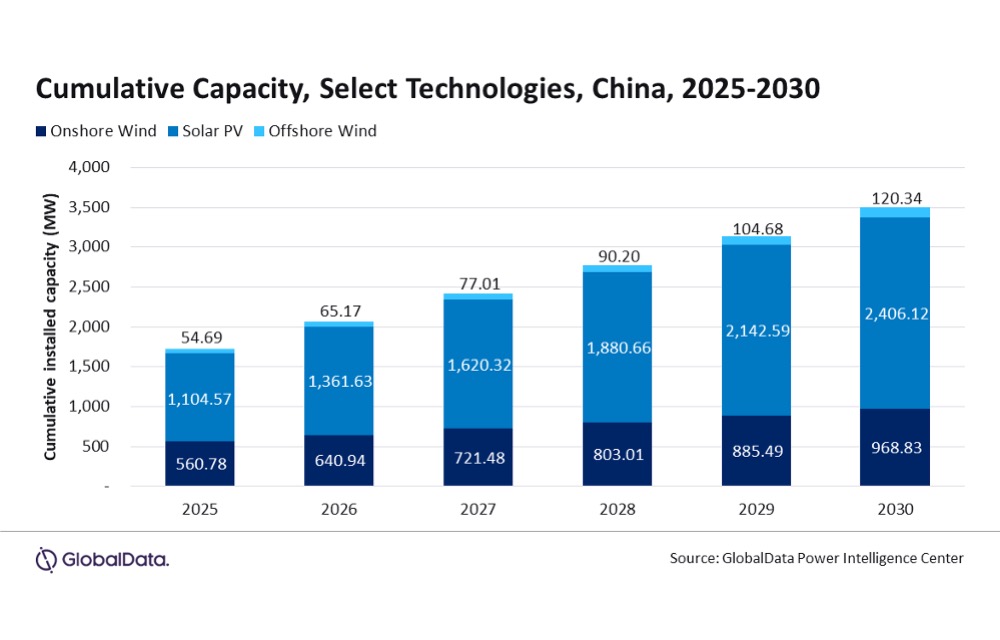- China is set to exceed its 2030 target of combined solar PV and wind energy capacity in 2025, with a significant margin
- It is likely to achieve a combined 1.72 TW capacity by 2025, expanding it from 1.05 TW at the end of 2023
- Financial incentives and policy support are among the key drivers for the country forecasted to meet its targets ahead of schedule
By 2030, China has pledged to install a combined 1,200 GW solar PV and wind energy capacity; however, the country is on track to exceed this by a significant margin, and 5 years ahead of schedule, according to GlobalData. It forecasts the country to exit 2025 with a total of 1,720 GW of solar PV and wind capacity.
As per China’s National Energy Administration (NEA) statistics, the country was 80 GW short of reaching the 1.2 TW target at the end of Q1/2024 (see China Installed 45.7 GW New Solar PV Capacity In Q1/2024).
At the end of 2023, China’s cumulatively installed solar PV capacity reached 609.5 GW, while onshore wind reached 408.1 GW, and offshore wind 37.7 GW. GlobalData analysts estimate that by 2025, the total volume for these technologies will expand to 1,104.6 GW, 560.8 GW and 54.7 GW, respectively.
By 2030, it estimates China’s cumulative solar PV capacity to expand to 2,406.12 GW.
The analysts attribute financial incentives and policy support among the primary drivers that facilitate the achievement of targets ahead of schedule.
“In 2023, solar PV power constituted 20.9% of the total installed capacity mix, while onshore and offshore wind accounted for 14% and 1.3%, respectively. By 2030, it is projected that solar PV will represent 41.8% of the country’s total power capacity mix,” said GlobalData Power Analyst Sudeshna Sarmah. “Additionally, onshore and offshore wind are anticipated to hold shares of 16.8% and 2.1%, respectively.”
As of now, however, China depends on thermal power to meet a majority of its electricity demand, especially coal. As the analysts point out, China’s domestic coal production is on the downhill, leaving it to import coal.
Hence, it needs to press ahead with renewable energy generation which comes at a cost in terms of developing new transmission lines and a comprehensive smart grid network.
A lack of grid infrastructure has deferred several renewable energy projects due to a lack of offtakers, it points out. In its report titled China Power Market Size, Trends, Regulations, Competitive Landscape and Forecast, 2024-2035, GlobalData recommends adopting a decentralized approach to power generation and consumption.
“Transitioning to a decentralized approach may supplant the existing centralized planning process, fostering more nimble decision-making,” adds Sarmah. “It is imperative that the government give precedence to the development of grid infrastructure and the advancement of energy storage systems, with the objective of gradually diminishing its dependence on thermal power.”
The complete report can be purchased from GlobalData’s website for $2,500.



